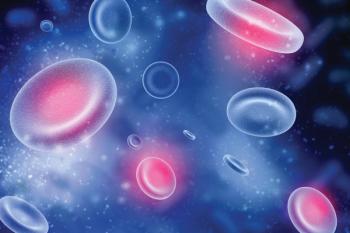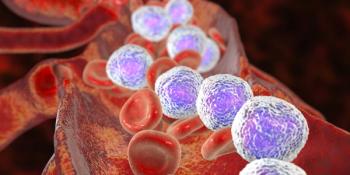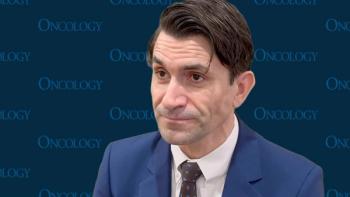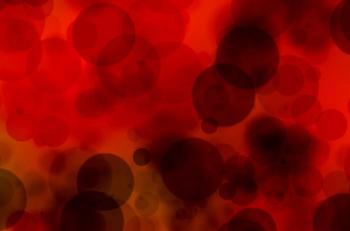
Acute Lymphoblastic Leukemia Responds to Immunotherapy
A single cycle of blinatumomab resulted in complete minimal residual disease response in 78% of patients with acute lymphoblastic leukemia.
A single cycle of the CD19-based immunotherapy blinatumomab resulted in complete minimal residual disease (MRD) response in 78% of patients with acute lymphoblastic leukemia (ALL). A complete MRD response occurred in 80% of patients throughout the course of blinatumomab therapy. The results of the international phase II BLAST trial were
“Persistent minimal residual disease leads to a very poor prognosis in ALL patients,” said presenter and lead study author Nicola Gökbuget, MD, of Goethe University Hospital in Frankfurt, Germany, at a press conference. Patients with MRD after induction therapy, even those who achieved a hematologic complete remission, have a higher relapse rate compared with those with no MRD, even after a stem cell transplant.
“New approaches are needed to improve outcomes in patients with persistent or recurrent minimal residual disease,” said Gökbuget.
The BLAST trial tested whether blinatumomab can achieve a complete MRD response after a single cycle in 116 ALL patients with a hematologic complete remission who have not had a prior allogeneic stem cell transplant. All patients received a single cycle of the immunotherapy and were then assessed for MRD and continued on trial for up to three subsequent blinatumomab cycles. Follow-up of the trial will assess whether elimination of MRD translates to long-term survival.
Blinatumomab is a “new treatment principle,” said Gökbuget. The drug consists of a CD19-directed antibody linked to a CD3-directed antibody portion. The agent is a part of a new class of bispecific T-cell engagers (BiTEs) that elicit an immune response against tumor cells. CD19 is highly expressed on B-cell tumors, including ALL, while CD3 is a T-cell co-receptor that is required for T-cell activation. Blinatumomab brings CD19-positive ALL cells to T-cells to direct cell-specific lysis of these cells.
The most common adverse events were flu-like systems (fatigue, pyrexia, chills) and gastrointestinal symptoms (diarrhea, nausea, vomiting). Seven percent of patients had a grade 3 or higher fever. Twenty-nine percent of patients had tremors and 13% had aphasia. These neurologic events were clinically relevant, according to Gökbuget.
A 39-patient immunotherapy trial of children with relapsed, refractory ALL resulted in a complete remission in 92% (36) of the patients. The patients were treated with CTL019, a T-cell therapy engineered with a chimeric antigen receptor (CAR) targeted to CD19. The results were
Dr. Grupp discusses the trial.
Fifteen of the patients are still alive after 1 year, and three have gone on to a stem cell transplant. Ten of the patients have relapsed, five with CD19-positive disease and five with CD19-negative disease.
T-cells are collected from each patient, engineered to express the CAR protein against CD19, and then administered back into the patient where the now-activated T-cells target CD19-positive malignant B-cells. So far, over 130 patients with hematologic cancers have been treated.
A significant risk for patients is cytokine-release syndrome, an on-target toxicity that can be reversed, according to Grupp. “We see persistence of the T-cells, which, I think, is the key for patients to remaining in remission.”
Newsletter
Stay up to date on recent advances in the multidisciplinary approach to cancer.



















































































